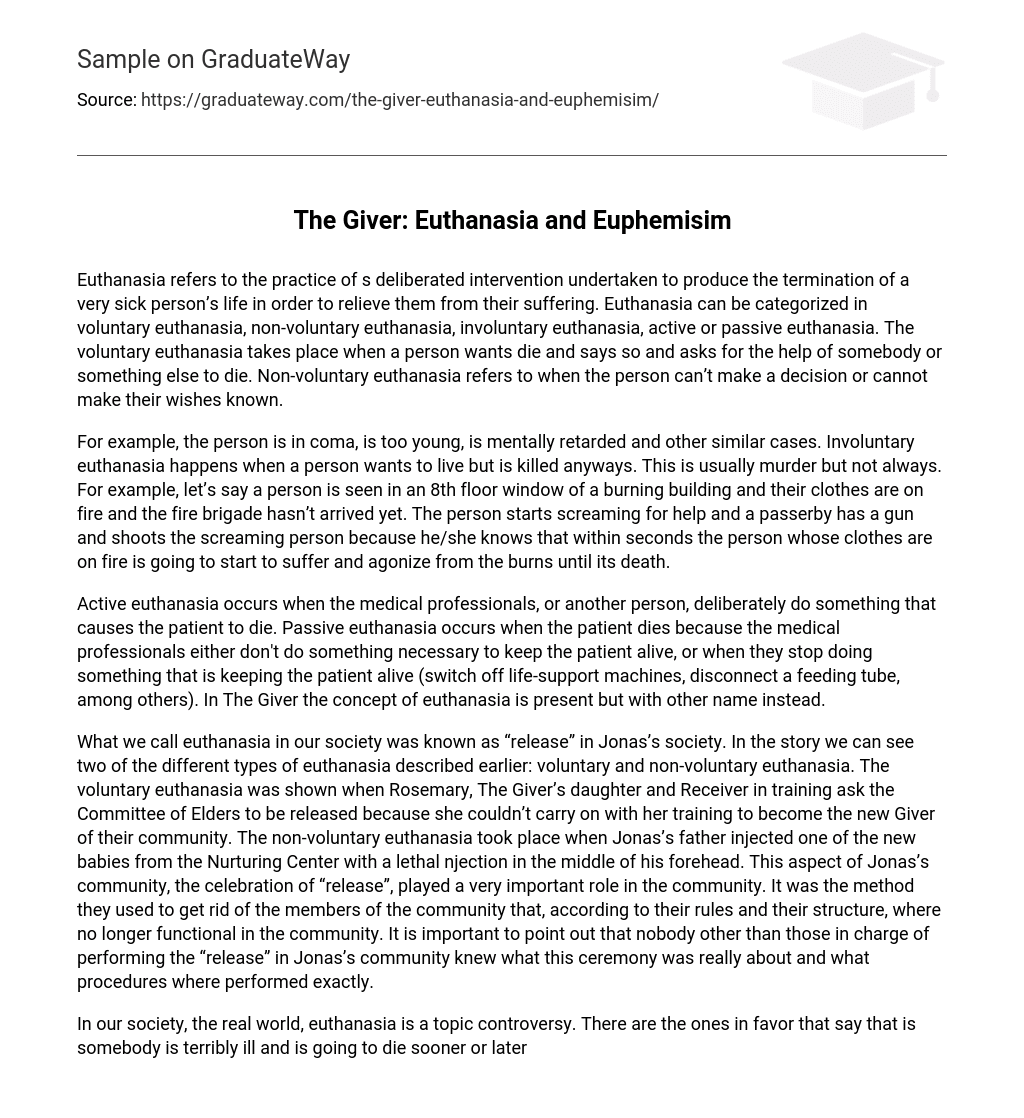Euthanasia refers to the intentional act of ending the life of a seriously ill person to alleviate their suffering. It can be categorized into various types, including voluntary, non-voluntary, involuntary, active, and passive euthanasia. Voluntary euthanasia occurs when an individual clearly expresses their wish to die and seeks help from someone else. Non-voluntary euthanasia involves situations where the person is unable to make decisions or communicate their desires.
Involuntary euthanasia is the act of ending someone’s life against their will, even if they want to continue living. Although it can be seen as murder, there are exceptions in certain circumstances. For example, imagine a situation where an individual is trapped on the 8th floor of a burning building. Their clothes are on fire and there is no hope of rescue. In extreme distress, the person cries out for help and a passerby who happens to be carrying a gun decides to shoot them. The shooter understands that the victim’s burns will cause unbearable suffering until death and believes that shooting them will provide relief from this agonizing ordeal.
Active euthanasia, also known as intentional patient death caused by medical professionals or another individual, differs from passive euthanasia. Passive euthanasia refers to the act of medical professionals ceasing necessary care for a patient or discontinuing interventions that sustain the patient’s life, such as disabling life-support machines or removing a feeding tube. In The Giver, a comparable concept to euthanasia is depicted using alternative terminology.
The society in which Jonas lived referred to euthanasia as “release”. Euthanasia was divided into two categories: voluntary and non-voluntary. Voluntary euthanasia occurred when Rosemary, who was the daughter of The Giver and a trainee Receiver, asked to be released because she could not continue her training as the new Giver. Non-voluntary euthanasia happened when Jonas’s father gave a lethal injection to a baby from the Nurturing Center directly into their forehead. The celebration of “release” played a significant role in Jonas’s community and served as a way to eliminate individuals who were considered non-functional according to community rules. It is important to note that only those involved in carrying out the “release” knew the true nature of this ceremony and its specific procedures.
There is controversy surrounding euthanasia in society, as some believe that terminally ill individuals should have the right to choose when to end their suffering based on bodily autonomy. Additionally, supporters argue that it is ethically acceptable to terminate the life of those who are experiencing extreme pain and are unable to make decisions.
Opinions on euthanasia differ, with some individuals believing that the decision of when someone should die should be left to God. While it is not universally allowed, there are countries and states where euthanasia is legal. The ethical dilemmas surrounding euthanasia highlight the different views on the value of human life. Personally, I support banning euthanasia because it could potentially be used as a disguise for murder.
While I personally agree with the idea, I think it is acceptable for a patient to provide consent to a doctor’s aid in terminating their life. The use of euphemisms involves replacing an expression that may be offensive or convey something unpleasant to the listener with a more pleasant or less offensive expression. Euphemisms can also serve the purpose of creating a lighter tone or deceiving. When used as a euphemism, a phrase often takes on metaphorical meaning, disregarding its literal interpretation.
Euphemisms can be employed to conceal unpalatable or unsettling ideas, even when the literal term is not inherently offensive. This form of euphemism is commonly utilized in public relations and politics, often referred to as doublespeak. Politeness is occasionally associated with the use of euphemisms. Additionally, there exist superstitious euphemisms, which stem from the belief that certain words have the ability to bring about misfortune. Furthermore, religious euphemisms are founded on the notion that certain words hold sacred significance or possess spiritual risks.
The Giver depicts a society characterized by meticulous control, where all aspects are carefully manipulated to uphold order and precision. The citizens’ behavior is strictly governed by regulations, particularly emphasizing the precise use of language. Language plays a pivotal role in this society’s pursuit of perfection. It is important to acknowledge that the term “release” serves as a euphemism for the act of carrying out killings.
Release in Jonas’s community is often associated with concepts of freedom, looseness, being unleashed, and unattached. However, the precise rituals connected to this ceremony were concealed and known only by those responsible for conducting them. The inhabitants of this society remained oblivious to the fact that release represented their own demise; instead, they perceived it as a joyous event and a significant transition in life, particularly for older individuals. This viewpoint was primarily influenced by the deeply ingrained societal beliefs.
Euphemisms play various roles in our society, serving as a source of entertainment, inflicting pain, showing disrespect, conveying hidden meanings, and addressing the topic of death. When it comes to communicating the loss of a loved one, there are challenging situations where individuals often turn to euphemisms to convey this sad news. Instead of directly stating that someone has died, alternative phrases like “passed away,” “been called home,” “departed,” or “returned to the ground” may be used. These expressions aim to soften the impact and reduce the harshness associated with making such an announcement.





